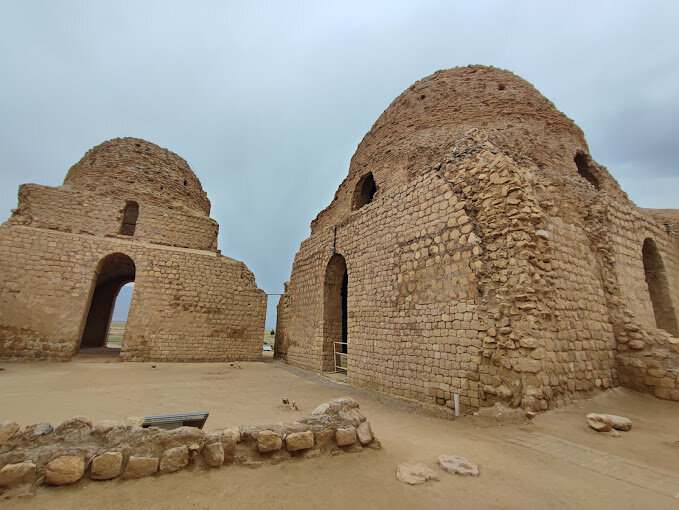New pathway to enhance visitors’ experience at 1,600-year-old palace

TEHRAN - A new tourist pathway is being constructed to enhance access and protection at the Sassanid Palace in Sarvestan, a UNESCO World Heritage site.
“Two projects aimed at safeguarding and organizing the World Heritage-listed Sassanid Palace in Sarvestan will be implemented soon,” said a local tourism official, speaking on the sidelines of a visit to the Sassanid site on Sunday.
Mohammad Sabet-Eqlidi further explained that a safe visitor pathway and access to the architectural spaces of the Sarvestan Palace will be constructed with an allocated budget of over 13 billion rials (some $25,000).
The director-general added that the project involves the development of a dual-purpose pathway (both protective and tourist-oriented) for the brick dome of the Sassanid Palace.
With the completion of these projects, access via stairs to the top of the dome will be provided for visitors and tourists, allowing them to view the interior spaces from above, according to Sabet-Eqlidi.
Sarvestan Palace is a Sassanid-era structure located in Fars province and is one of the World Heritage sites included in the Sassanid Archaeological Landscape. This monumental building is situated 13 kilometers south of Sarvestan and along the route from Shiraz to Fasa in southwestern Iran.
The palace, a magnificent structure measuring 37 by 45 meters, features two large domes, arches, various portals, and is constructed with architectural materials such as rubble stone and plaster, with some brick ceilings. It includes numerous sections, blending spaces seamlessly together.
The main parts of the building consist of five iwans, two domed halls, two columned halls, three rooms, and a central open space. The palace, locally known as “Qasr-e Sasan” or “Chartaq,” is commonly referred to as the Sarvestan Palace.
The building showcases the architectural continuity from the ancient era to the Islamic period. The Sassanid Palace in Sarvestan was inscribed as part of the “Sassanid Archaeological Landscape of Fars Region” on the UNESCO World Heritage List in 2018. This archaeological landscape encompasses eight historical sites across three historical areas: Firuzabad, Bishapur, and Sarvestan, located in southeastern Fars province.
The Sassanid era (224-651 CE) is of very high importance in the history of Iran. Under the Sassanids, Persian art and architecture experienced a general renaissance.
XF/AM
